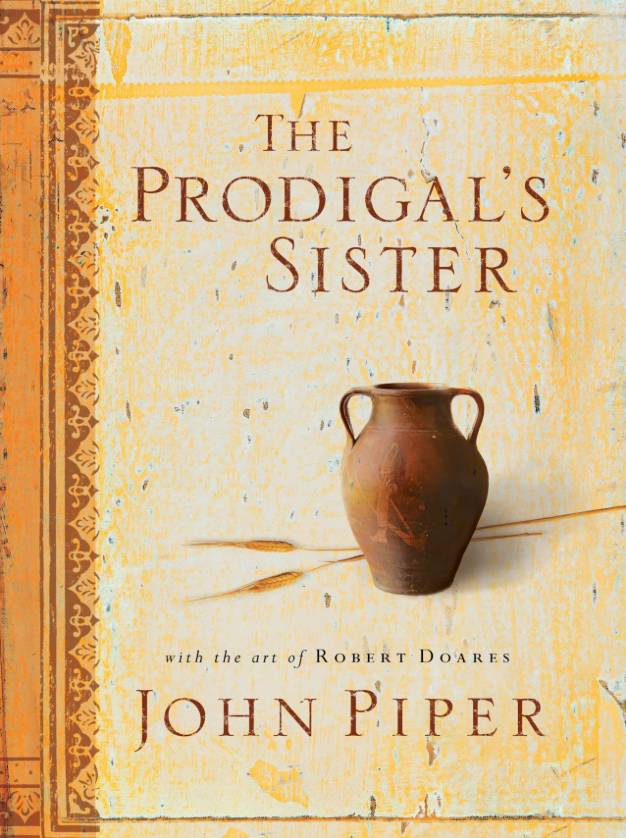John Piper’s “The Prodigal’s Sister” offers a refreshing and imaginative extension to the well-known parable of the Prodigal Son. This cover is below.
 Through poetic verses and compelling storytelling, Piper explores the untold story of the prodigal’s sister, Hahyaneta, adding depth and new perspectives to this biblical narrative.
Through poetic verses and compelling storytelling, Piper explores the untold story of the prodigal’s sister, Hahyaneta, adding depth and new perspectives to this biblical narrative.
The book begins with a heartfelt introduction, where Piper sets the tone by addressing the profound impact of the prodigal’s return. He emphasizes the joy and celebration accompanying the homecoming of a lost one, a theme that resonates deeply throughout the book. Piper’s unique approach lies in his contemplation of an additional character, Hahyaneta, who undertakes a courageous journey to find her lost brother, Níqvah.
In the first part of the book, “Both His Sons Had Died,” Piper vividly depicts the father’s despair and Hahyaneta’s unwavering resolve. The narrative is rich with imagery, comparing the empty road from the father’s farm to an arm that once embraced and then let go. Piper skillfully describes the setting, with fields of wheat that could symbolize paradise or walls of wrath, depending on one’s perspective. This duality reflects the internal conflict faced by both the prodigal and his family.
Hahyaneta’s character is portrayed as a beacon of hope and determination. Despite the dangers of the sinful city of Noash, she is driven by her love for her brother and her desire to bring him home. Piper’s poetic style shines as he describes Hahyaneta’s journey and her nightly vigils, praying for her brother’s return. The narrative interweaves the past and present, revealing Hahyaneta’s childhood memories and her deep bond with her family.
Part two, “Your Little Girl Can Raise the Dead,” delves into Hahyaneta’s daring mission. Piper’s portrayal of her bravery and resilience is both inspiring and poignant. He explores the theme of redemption, not just for the prodigal, but for the entire family. Hahyaneta’s faith and her belief in the power of love and truth are central to this narrative. Piper’s use of poetic language elevates the story, making it a moving and thought-provoking read.
Throughout “The Prodigal’s Sister,” Piper’s theological insights are evident. He draws parallels between Hahyaneta’s quest and the Christian journey of faith. The book is more than a mere extension of the parable; it is a meditation on grace, forgiveness, and the transformative power of love. Piper challenges readers to consider the broader implications of the prodigal’s story, encouraging them to reflect on their own relationships and spiritual journeys.
Robert Doares’s illustrations add a visual dimension to the book, enhancing Piper’s lyrical prose. The artwork complements the narrative, capturing the emotional intensity and spiritual significance of Hahyaneta’s journey.
In conclusion, “The Prodigal’s Sister” by John Piper is a beautifully crafted work that enriches the traditional parable with new characters and profound insights. Piper’s poetic storytelling and theological depth make this book a valuable addition to Christian literature. It invites readers to explore the themes of redemption and grace from a fresh perspective, making it a must-read for anyone seeking to deepen their understanding of the prodigal’s story.